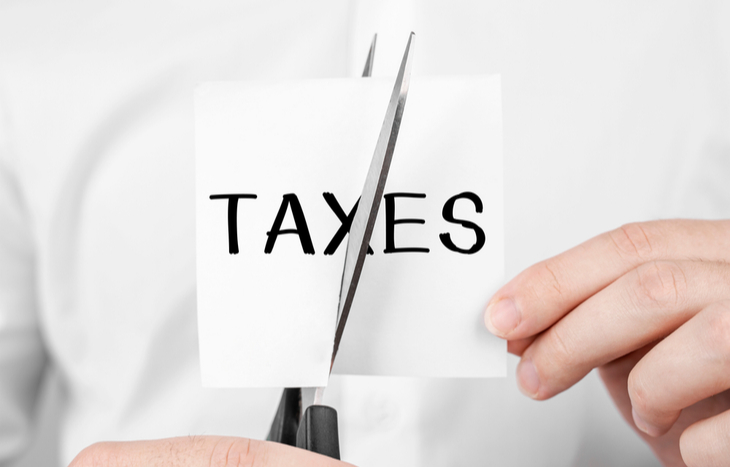Tax-Free Investments to Reduce Your Tax Liability to Uncle Sam
You’ve listened to the experts. And you’ve decided to heed their advice: invest for retirement. It’s a good idea, too, since pensions are disappearing in the private sector. Meanwhile, Social Security benefits are not likely to provide enough income on their own.
To add to all of this, brokerage accounts incur capital gains. This means any gains on your investments are taxed when you sell them. This situation is not ideal. Especially for someone looking to make up a budget shortfall left by Social Security.

The good news is that there are several tax-free investments that can help you reduce your tax bill. In reality, in most cases, you will have to pay some amount of taxes. But these investments can help you reduce them:
- 401(k), 457(b), 403(b), and other employer-sponsored retirement plans
- Traditional IRA/Roth IRA
- Health savings account
- 529 plans
Let’s take a closer look at each of these tax-free investments and the advantages of each.
Employer-Sponsored Retirement Plans
When it comes to employer-sponsored retirement plans, nothing quite beats defined benefit plans (pensions). But pensions are disappearing. However, plans such as the 401(k) are a good option for those looking to invest for retirement. In fact, these plans have a few unique advantages over other types of tax-free investments. We’ll cover these in more detail below.
Matching Contributions
This is arguably the biggest advantage of employer-sponsored retirement plans. So naturally, it’s one that no one should forego. Every employer makes matching contributions differently. But in general, your employer will match your contributions to your 401(k) or similar plan up to a certain percentage of your pay.
This is essentially “free money.” It’s like getting a raise without actually getting one. If your employer offers this as an opt-in benefit, be sure you do so. And try as best you can to contribute up to the maximum matching amount.
Payroll Deductions
One great thing about employer-sponsored retirement plans is the ability to contribute to them via a payroll deduction. This means the money is deducted directly from your paycheck. So it is entirely automatic if you are paid via direct deposit. In other words, your contributions are out-of-sight, out-of-mind. And you don’t even have to think about them.
In addition, if you have a traditional 401(k), contributions are tax-free investments. In other words, they allow you to reduce your taxable income. This in turn reduces the amount of income you will be taxed on for the year.
Other Considerations on Tax-Free Investments
The above discusses traditional 401(k) plans and how you can reduce your taxable income by contributing to one via payroll deduction. While gains on these plans are not taxed, you do incur taxes when you take distributions.
In order to avoid this situation, you may be able to opt for a Roth 401(k) or equivalent plan instead. Gains are still not taxed on these plans. But contributions are made with after-tax dollars. And distributions are tax-free.
Traditional IRA/Roth IRA
Individual retirement accounts (IRAs) are retirement plans you open on your own. Instead of contributing through your employer, you open the account and make contributions entirely on your own. While that makes IRAs slightly less convenient than employer-sponsored retirement plans, they do have their advantages.
More Tax-Free Investment Options
If you want to make tax-free investments, an IRA may give you the most options. Sponsors of employer-sponsored retirement plans select certain investments from which you get to choose. But that typically limits you to certain investment options. In most cases, you can only invest in mutual funds.
IRA plans, on the other hand, give you the full gamut of mutual funds, ETFs, and stocks. Some brokers even let you invest in cryptocurrency and other assets.
Lower Fees
As mentioned, 401(k) plan sponsors decide which mutual funds you can select. And those options don’t always have the lowest fees. This might leave you with mutual funds that have fees approaching 1% expense ratios. While that may not sound like much, 1% is substantial for investment accounts. Meanwhile, an IRA gives you access to passively-managed ETFs, some of which have no fees at all.
Tax-Deductible
Something to keep in mind about IRAs is that, unless your employer offers one, there is no option to contribute via payroll deduction. That means if you open a traditional IRA, you will have to contribute with after-tax dollars. However, these contributions are tax-deductible. This means you can claim them on your next tax return. In return you can reduce your tax liability. Meanwhile, Roth IRAs are funded with after-tax dollars. And distributions won’t be taxed. In either case, gains are not taxed unless and until you sell your investments.
Health Savings Account
Health savings accounts, as their name implies, are savings accounts meant to cover healthcare expenses. However, it’s also possible to use these accounts for tax-free and tax-deferred earnings. Plus, you never lose the money in an HSA. This is the case whether you spend it the year you contributed or not.
Some call these accounts “triple tax-advantaged.” That’s because contributions can be tax-deductible. Earnings are tax-deferred. And money withdrawn for eligible medical expenses is tax-free. But it’s even possible for withdrawals to be tax-free. Even if you don’t use the money for medical expenses. Hence, HSAs can be used like retirement accounts and are one of the best tax-free investments available today.
They do come with contribution limits though. These are typically lower than that of a 401(k) or IRA. In addition, you must have a high-deductible health plan (HDHP) to contribute to an HSA. This is the case regardless of how you intend to use the HSA. But not all employers offer an HDHP. Thus, you can’t contribute to an HSA if an HDHP is not offered by your employer.
529 Plans
529 plans allow you to invest in education, such as tuition for your child to attend college in the future. While contributions are not tax-free, the money you earn is not taxable. So in that sense, it is sort of a tax-free investment. And that money can be used for a variety of education-related expenses. You aren’t just limited to tuition costs.
There are some unique considerations when it comes to 529 plans, however. For instance, these plans are not tax-deductible on the federal level. And they can’t be used as a retirement savings vehicle. But depending on where you live, there may be deductions at the state level. In fact, more than 30 states and the District of Columbia offer state tax deductions for 529 plans. Thus, these plans can be partly tax-free depending upon where you live.
Looking for Tax-Free and Tax-Advantaged Investments?
Planning for retirement can be a real chore… There’s figuring out how to save enough money… Figuring out how to earn enough. And then of course there’s the matter of keeping Uncle Sam out of your pockets as much as possible in the process. If you’re looking for additional investment opportunities and ways to keep from going broke in retirement, we suggest checking out the Wealthy Retirement e-letter. This will give you instant access to ideas and strategies of the author of You Don’t Have to Drive an Uber in Retirement. Investment expert Marc Lichtenfeld has made a career out of helping people prepare for retirement. And all you need to do to get started is enter your email address in the box below.
[adzerk-get-ad zone="245143" size="4"]About Bob Haegele
Bob Haegele is a personal finance writer who specializes in investing and planning for retirement. His hefty student loan burden inspired him to pay off his loans, and now he’s helping others get their finances in order. When he’s not writing, he enjoys travel and live music.





